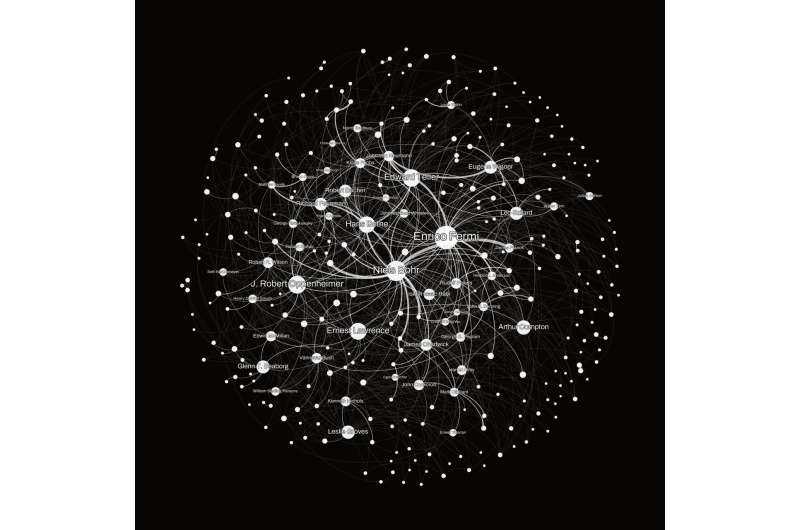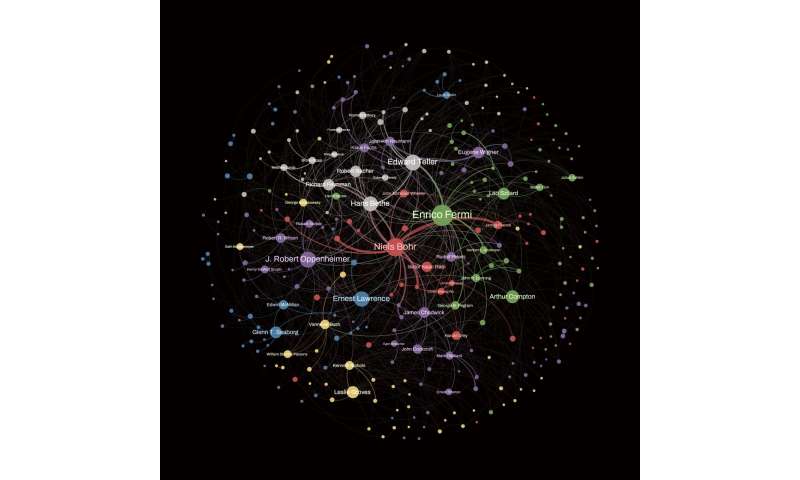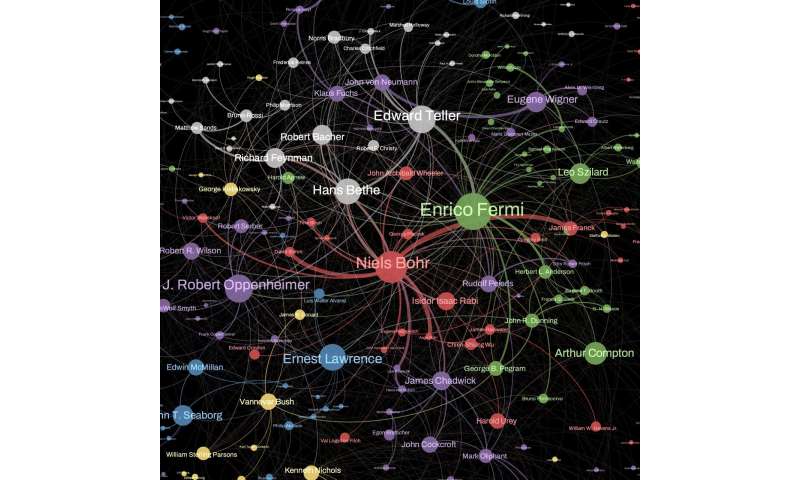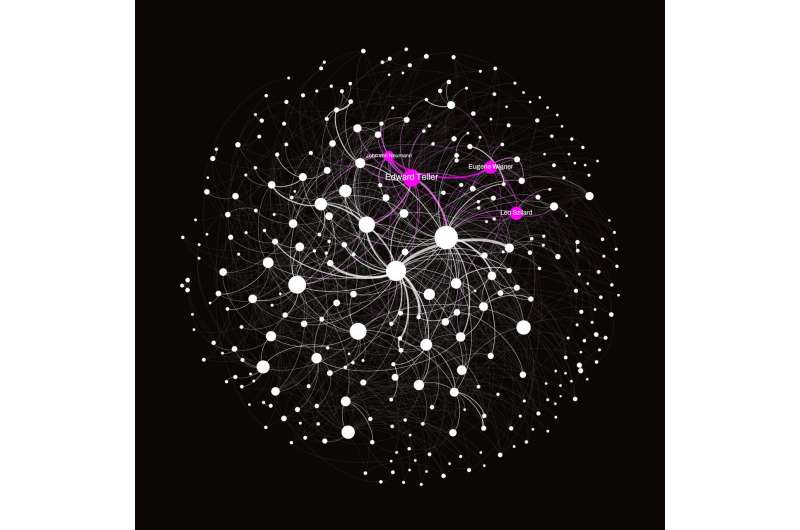December 19, 2023 feature
This article has been reviewed according to Science X's editorial process and policies. Editors have highlighted the following attributes while ensuring the content's credibility:
fact-checked
preprint
trusted source
proofread
Mapping the relations between Manhattan Project scientists using network science

The Manhattan Project was a top-secret program that culminated in the development of the first atomic bombs during World War 2. This covert and controversial research endeavor involved many gifted and reputable scientists, including physicist J. Robert Oppenheimer.
Milán Janosov, Founder of Geospatial Data Consulting and Chief Data Scientist at Baoba, recently set out to map the relationships between scientists who took part in the Manhattan Project using methods rooted in network science. Network or data science is a field of research that explores the intricate connections between people in a group or between individual parts of networked systems. The work is published on the arXiv preprint server.
"I have been working with social networks and mapping unusual datasets to uncover hidden connections for a while," Janosov said. "During this journey, I also mapped hidden networks of scientists, including for instance, the network of Nobel laureates in another project released earlier this year. So, I already had a history of mapping scientists' networks. After watching the long-awaited Oppenheimer movie, I decided to also untangle the collaboration and social connections behind the Manhattan project, which if one of the largest, most impactful scientific collaborations of human history."
The release of the popular movie Oppenheimer in July this year re-awoke significant public interest in the Manhattan Project and the substantial research efforts that led to the development of the atomic bomb. This inspired Janosov, a trained network scientist with a background in physics, to explore this topic in his research.
"A practical and traditionally accepted way of building networks of scientists relies on shared publications," Janosov explained. "However, even today, some of the Manhattan Project's science is classified, so that direction would have distorted the picture. So, I decided to drop this steer away from classified and private data to the most public information platform available—Wikipedia."
-

Credit: Milan Janosov. -

Credit: Milan Janosov.
To map the relationships between different scientists involved in the Manhattan project, Janosov firstly collected every Nobel laureate's Wikipedia page and compiled these pages into a dataset. Subsequently, he used language processing techniques to analyze the texts included in these pages.
"This approach allowed me to quantify how often each laureate's page refers to others," Janosov said. "This was all I needed to build their network, in which each scientist was a node linked based on Wikipedia mentions and references. For instance, the Wiki page of Oppenheimer mentions Enrico Fermi more than 10 times, leading to a strong link between the two physicists."
The map created by Janosov represents the most renowned scientists involved in the Manhattan Project as dots and the connections between these scientists as lines that connect the dots. These dots and lines create an intricate web of relationships, highlighting research circles that closely collaborated at the time.
"It's exciting to see how the network's community structure outlines the different departments and historically well-known cliques who worked in the projects, such as the Theoretical Division with Feynman or World War II refugees around Borh," Janosov said. "However, my favorite part is about the Hungarian immigrants who run under the nickname Martians: Teller, Wigner, Szilard, and Neuman, who played a foundational role in the dawn of the atomic. As it turns out, also in this network, using the right coloring, their strong connectedness is also clearly visible."

The colorful map of The Manhattan Project created by Janosov is one of the most recent examples of just how valuable network science can be for creating representations of human connections and visual maps of complex systems with many interacting components. Future studies in this rapidly evolving area of research could shed some new light on a wide array of topics rooted in both science and the humanities.
"Nowadays, I am most focused on questions related to urban planning, geospatial data science, and sustainability," Janosov added. "I am currently exploring a crucial question in this domain, where network science can also be appropriately applied."
More information: Milan Janosov, Decoding the Manhattan Project's Network: Unveiling Science, Collaboration, and Human Legacy, arXiv (2023). DOI: 10.48550/arxiv.2310.01043
Journal information: arXiv
© 2023 Science X Network





















